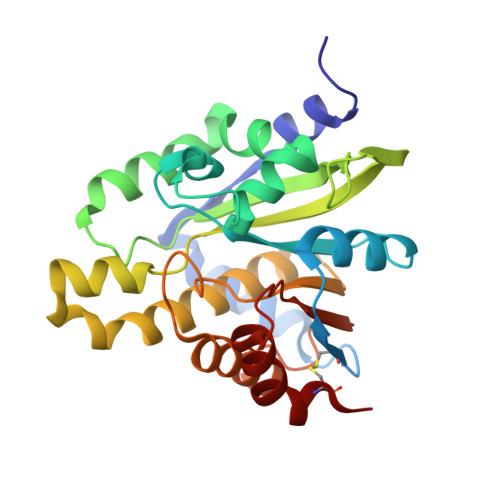Structural and biochemical evidence supporting poly ADP-ribosylation in the bacterium Deinococcus radiodurans.
Cho, C.C., Chien, C.Y., Chiu, Y.C., Lin, M.H., Hsu, C.H.(2019) Nat Commun 10: 1491-1491
- PubMed: 30940816
- DOI: https://doi.org/10.1038/s41467-019-09153-6
- Primary Citation of Related Structures:
5ZDA, 5ZDB, 5ZDC, 5ZDD, 5ZDE, 5ZDF, 5ZDG - PubMed Abstract:
Poly-ADP-ribosylation, a post-translational modification involved in various cellular processes, is well characterized in eukaryotes but thought to be devoid in bacteria. Here, we solve crystal structures of ADP-ribose-bound poly(ADP-ribose)glycohydrolase from the radioresistant bacterium Deinococcus radiodurans (DrPARG), revealing a solvent-accessible 2'-hydroxy group of ADP-ribose, which suggests that DrPARG may possess endo-glycohydrolase activity toward poly-ADP-ribose (PAR). We confirm the existence of PAR in D. radiodurans and show that disruption of DrPARG expression causes accumulation of endogenous PAR and compromises recovery from UV radiation damage. Moreover, endogenous PAR levels in D. radiodurans are elevated after UV irradiation, indicating that PARylation may be involved in resistance to genotoxic stresses. These findings provide structural insights into a bacterial-type PARG and suggest the existence of a prokaryotic PARylation machinery that may be involved in stress responses.
- Genome and Systems Biology Degree Program, National Taiwan University and Academia Sinica, Taipei, 10617, Taiwan.
Organizational Affiliation:

















